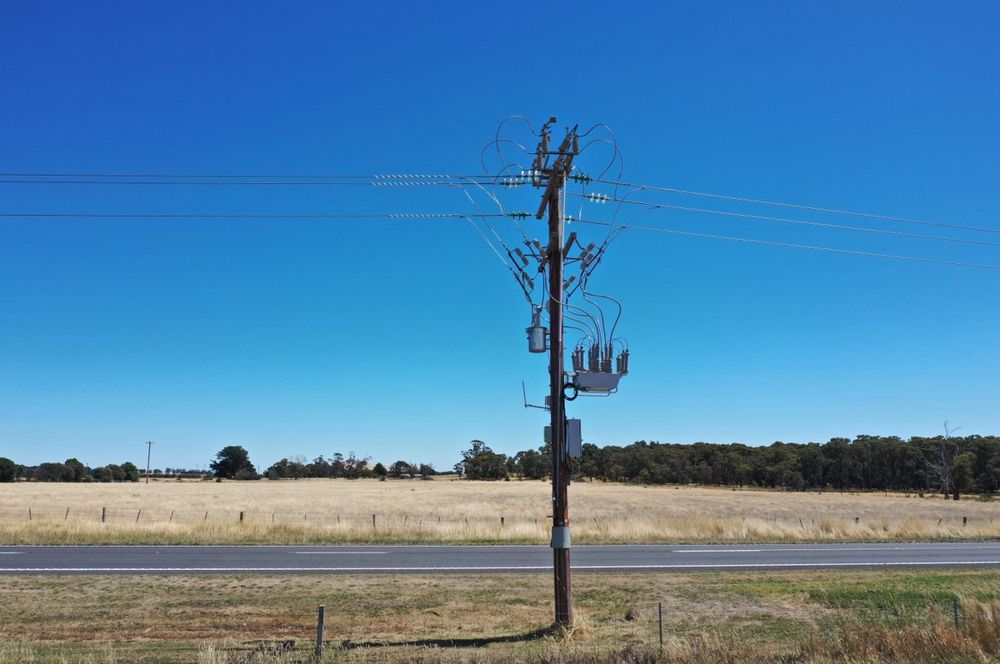Technical Article
Published 03/2024
Reducing Biodiversity Risk with Switchgear Selection

Biodiversity risk is a key consideration for modern business. The impact of business activities on the natural environment, and our symbiotic reliance on biodiversity for service delivery makes biodiversity consideration critical for effective business management.
Electricity distribution is no different. While overhead lines are cost effective and less carbon intense than underground cable, the exposure of high voltage to the environment introduces a risk of electrocution to wildlife. Managing that risk is the prerogative of electricity distribution businesses, preserving the social license to operate, and delivering an essential service in a safe and reliable manner. Outages caused by wildlife interaction with assets are largely preventable.
Fortunately, this is accounted for by modern switchgear manufacturers. Organisations such as NOJA Power provide mitigation techniques to both reduce biodiversity risk and improve asset reliability.
In this article, we explore four key techniques for mitigating biodiversity risk through technical specification of switchgear.
The Impact
Fundamentally, mitigating biodiversity risk is accomplished by introducing barriers between exposed high voltage conductors and wildlife contact. Wildlife that bridges the gap between an earth plane and a high voltage terminal introduces a short circuit, causing power to flow through the short circuit.
Barrier techniques reduce the likelihood that a short circuit occurs, resulting in less biodiversity risk, less outage risk, and improved asset reliability. Faults which occur on switchgear due to wildlife incursion can destroy the asset.
Since most mitigation techniques are highly cost effective, NOJA Power Switchgear’s installation philosophy is that animal guards should be the de facto standard for installations.

Bird Guards
Bird guards are electrical insulating covers for the exposed terminals of a high voltage asset. These are installed after the overhead lines are terminated onto the equipment, providing a mechanical barrier between the high voltage terminal and the outer environment.
While they are not considered a safe isolation for lines operators, they reduce the likelihood of animals bridging the gap between the earthed asset, over the bushing sheds, and contacting the high voltage lines or terminals.
Bird guards are available for all terminal types, including surge arrestor terminals and voltage transformer terminals. A comprehensive mitigation strategy includes coverage of all terminals. As an example, NOJA Power switchgear have bird guard types for all exposed terminations on a typical high voltage installation, for Load Break Switches, Reclosers, surge arrestors and voltage transformers.
Covered Conductor Cable Tails
It is industry practice for the connections between the overhead lines and a pole mounted asset to be made using a conductor which is covered with an insulating medium, such as XLPE.
Like bird guards, this covered conductor approach does not provide operator safe insulation because it lacks an earth screen, but it does provide a major risk mitigation for animals bridging the gap between conductors or a conductor and the earthed asset.
This is a common source of confusion for newcomers to switchgear specification, as the cable tail insulation level does not need to match the insulation requirement of the asset. For example, a 38 kV installation may only need cables insulated to 11kV. The cables are not being used as a working isolation for operators, instead only providing a mechanical barrier against animal contact.
Installing cables insulated to full network voltage is not practical in an overhead connection scenario, but the 11kV covered conductor is generally sufficient for most applications and provides appreciable mitigation for biodiversity risk.
Animal Climbing Guards
Animal climbing guards are a metal sheath installed near the base of the power pole installation. This sheath reduces the likelihood of animals successfully climbing the pole and contacting high voltage terminals.
These are a simple intervention asset which can be installed in both new and legacy installations.
Cattle Guards
In some regions, local OH&S regulations encourage installation of switchgear controllers low enough on a power pole to remove the need for a ladder. This approach reduces fall risk for operators, but introduces a risk of larger animals contacting the equipment.
Bringing the controller down to pedestrian height in rural areas can make the controller become a bovine scratching post – leading to damage of the control cables or communications accessories. To combat this, a cattle guard is mounted on the base of the control cubicle, providing mechanical protection for the cable entry points to the controller.
Conclusion
Biodiversity risk is a key consideration for any organisation reliant on managing electricity distribution assets. The risk considers both asset reliability outage risk, and the impact on wildlife. Both these aspects impact the bottom line, whether through direct loss of productivity, or through social license to operate.
Fortunately, mitigations of this exposure are cost effective, reliable and easy. Modern switchgear manufacturers such as NOJA Power can supply equipment to mitigate this risk.
“Our products have been engineered to have the least impact on the environment we possibly can,” says NOJA Power Group Managing Director Neil O'Sullivan.
“The accessories discussed in this article when fitted significantly reduce the impact of wildlife where our products are installed. Our products are the silent soldiers that protect the electricity distribution network every day, increase reliability and we are proud they have been designed to have the least possible impact on the environment in which they are installed.”
Given the minor relative cost to an equipment installation, NOJA Power recommend that animal guards are the default configuration for any installation. For more information, visit www.nojapower.com.au. or contact your local NOJA Power Distributor.
Want to stay up to date with Electrical Distribution Technology?
Join our list for a free weekly technical bulletin, as we share our Global Electrical Engineering experience directly to your inbox.
Subscribe →